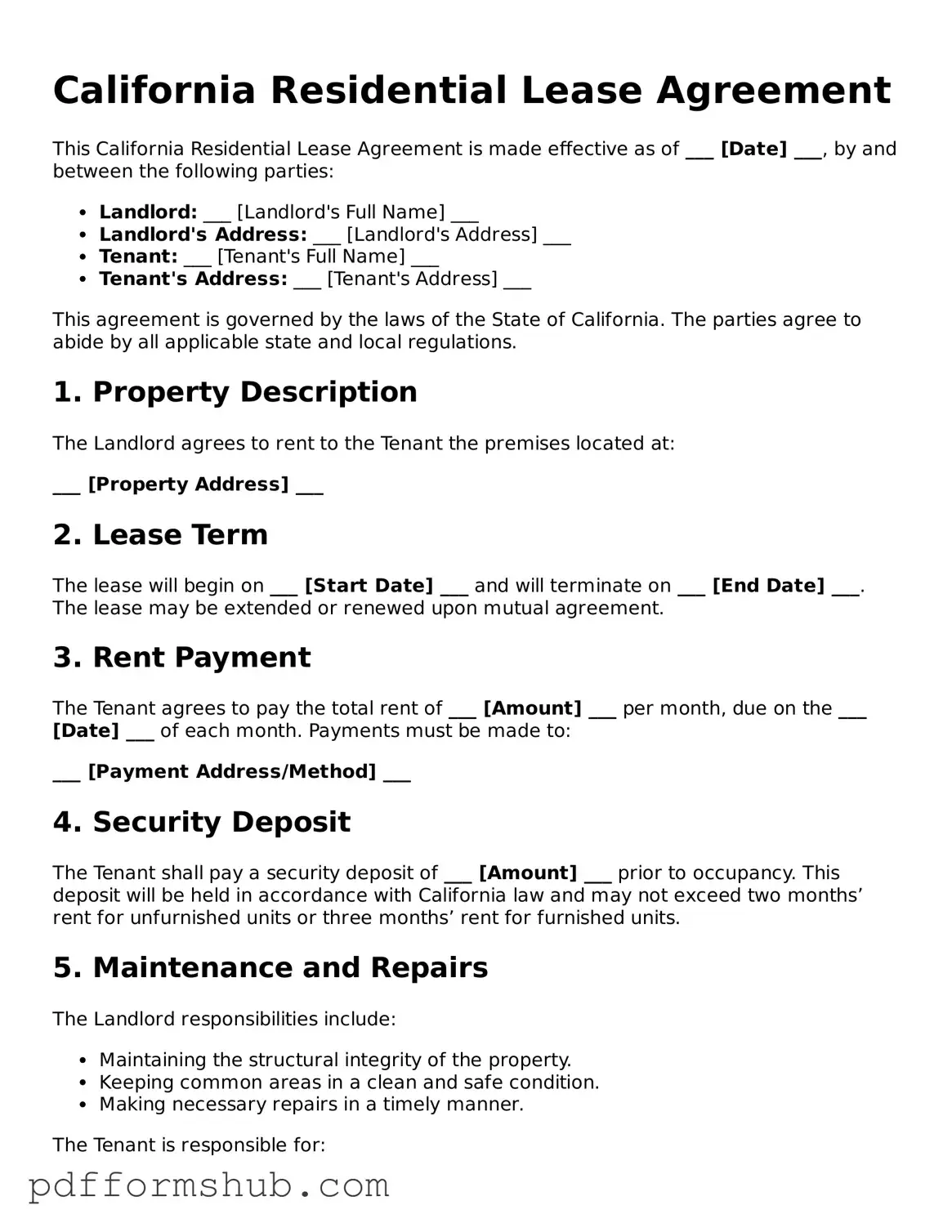Attorney-Verified Residential Lease Agreement Form for California State
The California Residential Lease Agreement is a legal document that outlines the terms and conditions between a landlord and tenant for renting a residential property. This form ensures that both parties understand their rights and responsibilities, providing clarity and protection throughout the lease term. Ready to get started? Fill out the form by clicking the button below.
Customize Form
